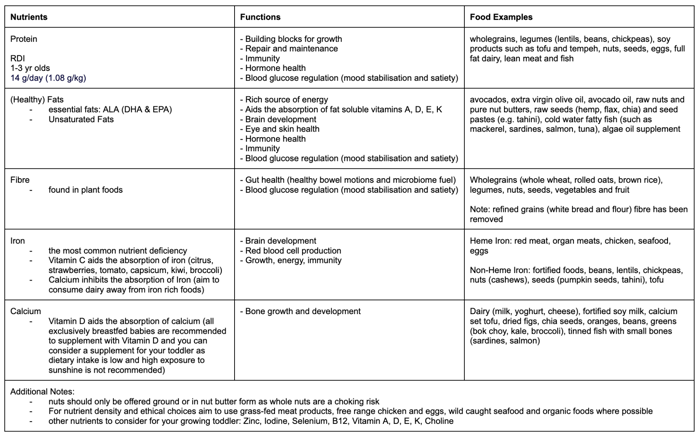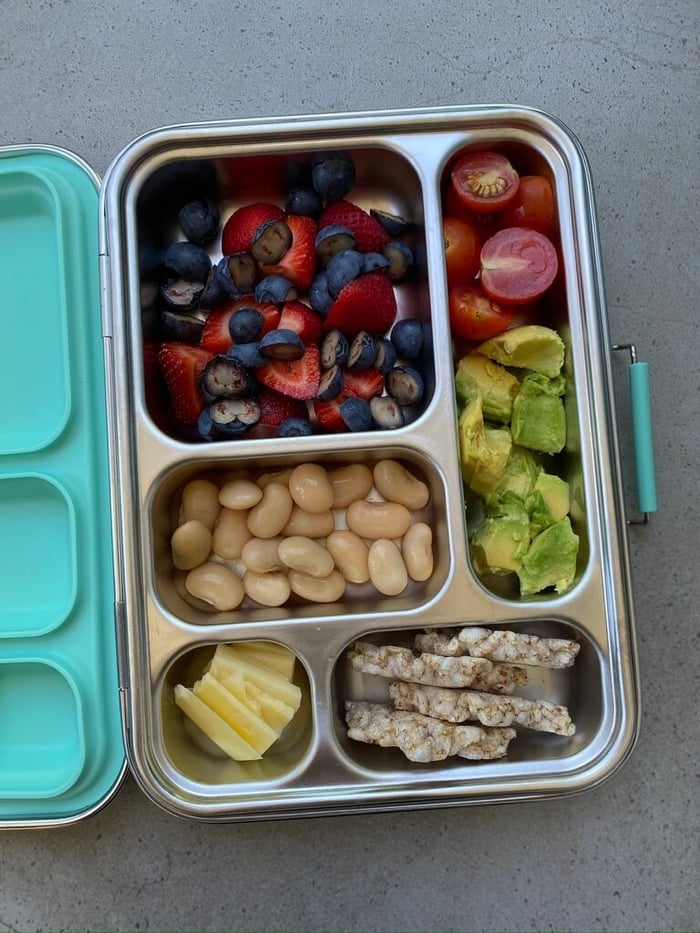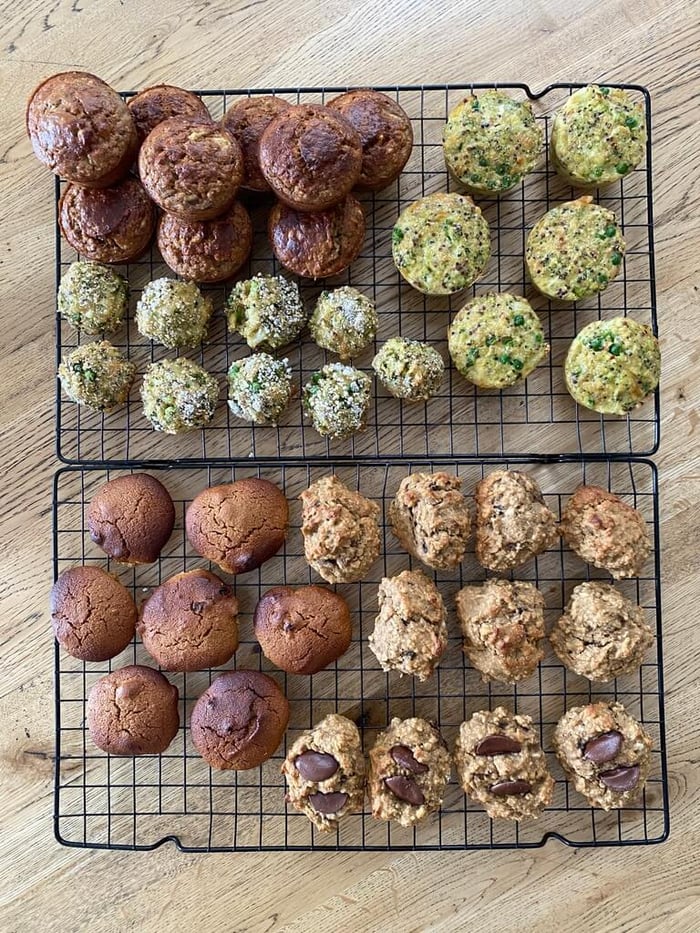Healthier Snacks for your little Monster AKA Toddler!
Congratulations! You have:
- made it through breastfeeding/bottle feeding
- introduced solids via baby led weaning, purees or a combination of the two
- Now you have a toddler AKA a snack monster and need ideas of how to keep them busy, happy, growing, satisfied and nourished.
Toddlers do usually need (and very much enjoy!) wholesome snacks to keep them going between meals.
- Following a “feeding schedule” can help toddlers to know when to expect their next snack and not spoil their dinner
- Aim to offer snacks outside of the ~3 hour window before lunch or dinner
- Just like adults, hydration helps little ones to regulate their appetite, don’t forget to also offer water
- If you find your little human is desperate for a snack while you are preparing their next meal, try offering fruit or veggies so that you know they have had something nutritious but not too filling before the main meal.
Homemade or Packaged Snacks
As with meals and snacks for adults, homemade is usually always the healthier option for your toddler.
- Packaged snacks also often contain additives (colours, flavours, preservatives and emulsifiers) that are best avoided.
- This is because you can use whole food ingredients, meaning they will be more nutrient dense and you can control the sugar and sodium content.
We want to avoid added sugars in toddler snacks for several reasons. (On an ingredients list, added sugars can appear as: sugar, raw cane sugar, glucose, fructose, corn syrup, maple syrup, honey, malt syrup, fruit juice and more).
- Firstly it is not good for their teeth!
- Secondly, if your child develops a “sweet tooth” at such an early age, this will likely influence their food preferences later in life and can lead to chronic health conditions associated with poor dietary choices.
- Thirdly, toddlers have a hard enough time stabilising their mood as it is, so we really want to help them avoid a sugar crash if possible, which can look like irritability amongst other things.
While some are better choices than others and are okay for the occasional treat, we don’t want them in everyday snacks. E.g. added “apple fruit juice concentrate” contains a lot more sugar than just offering your child some fresh apple slices that come naturally packaged up with the fibre too! Using a mashed banana or stewed apples to sweeten baked items is a great option.
Regarding sodium, it is best to avoid packaged foods with a lot of added salt as tiny developing kidneys can only cope with small amounts. Home cooked food lightly seasoned with salt or stock is okay for toddlers, we do just need to be mindful of “salty foods”.
Nutrients of focus for toddlers
In the table below, the macronutrients, protein, fats and fibre have been highlighted particularly for their support of blood glucose regulation which in turn provides mood stabilisation and keeps your toddler satisfied for longer. Additionally the micronutrients Iron and Calcium are minerals of major importance during this period of growth and development.

Regularly offering your child different whole foods will both encourage healthy eating and positively influence their ongoing food preferences, it will also ensure they are consuming a variety of nutrients. In offering food this way, we do not need to count and monitor specific nutrient intake. However, there are a few particular nutrients we can aim to include regularly in our offerings which will help our little ones thrive.

Nutrient Dense Snack Ideas
Pancakes made using rolled oats (blended to flour) or buckwheat flour with egg, mashed banana and cinnamon to sweeten
Muffins made using wholemeal flour (or alternative flour) with grated apple, carrot and cinnamon
Chickpea flour pancakes (can be used as pizza bases)
Chickpea flour fritters with grated veggies, peas or corn, cooked in extra virgin olive oil
Overnight oats made using soaked rolled oats and hemp seeds or chia seeds, served with natural yogurt and berries
Chia pudding made with milk and fruit of choice, alcohol free vanilla extract
Cookies made from rolled oats, mashed banana, sultanas, cinnamon and nut butter or tahini - try these without the chocolate chips
Wholemeal sourdough toast with nut butter and chia jam or smashed berries
Avocado, hummus and cheese on toast, rice cakes or buckwheat cakes
Homemade sushi
Drained and rinsed butter beans straight from the tin/jar
Boiled or scrambled eggs, try this shakshuka recipe
Mini frittatas made with roasted veggies - make a mini version of this
Banana bread made with wholemeal flour, almond flour or buckwheat flour with grated carrot or zucchini - try this recipe
Smoothies with your choice of milk, frozen berries, frozen cauliflower, kale or zucchini (goes unnoticed), nut butter, hemp, chia or flax seeds, a date to sweeten
Freeze leftover smoothies into ice lollies
Sliced banana, apple and pear with nut butter and cinnamon
Baked sweet potato wedges with hummus
Guacamole made with avocado, edamame lemon and garlic
Homemade bite sized savoury snacks such as: sweet potato tots, falafels, fish cakes, broccoli tots
If your toddler is anything like mine, sometimes (often) snacks get thrown on the floor so I love to be able to offer nutrient dense delicious snacks that also require minimum effort so that it is not too heartbreaking if they aren’t fully appreciated every time!
Nutrient Dense Ingredient or Supermarket Swaps
Swap a portion of the flour in baked good recipes for chickpea flour, buckwheat flour, almond flour or wholemeal spelt flour
Choose bread that is: wholewheat or wholegrain, sourdough, lower in sodium, free from non-whole food additives
Try non-wheat pastas such as lentil pasta, quinoa and amaranth spaghetti
Add blended silken tofu to sauces for creaminess or blended white beans for a fibre and nutrient rich protein source
Use soaked and blended cashews in place of cream
Swap the butter in recipes for extra virgin olive oil
Add a tablespoon of ground flax seeds, chia seeds, hemp seeds, nut butter or tahini to recipes
Use herbs, spices and aromatics to season rather than sugar/salt e.g. cinnamon, ground ginger, cumin, paprika, basil, oregano, garlic and onion (can use powders)
Always have frozen veggies on hand (add frozen cauliflower to smoothies, add frozen peas as a side)
Choose natural yoghurt and add fruit yourself or choose yogurt with no added sugar
Mix quinoa or millet with rice
Daisy Manson
BHSc + Nutrition
Co-Founder of The Whole Bowl Co.
Max's Mama!


